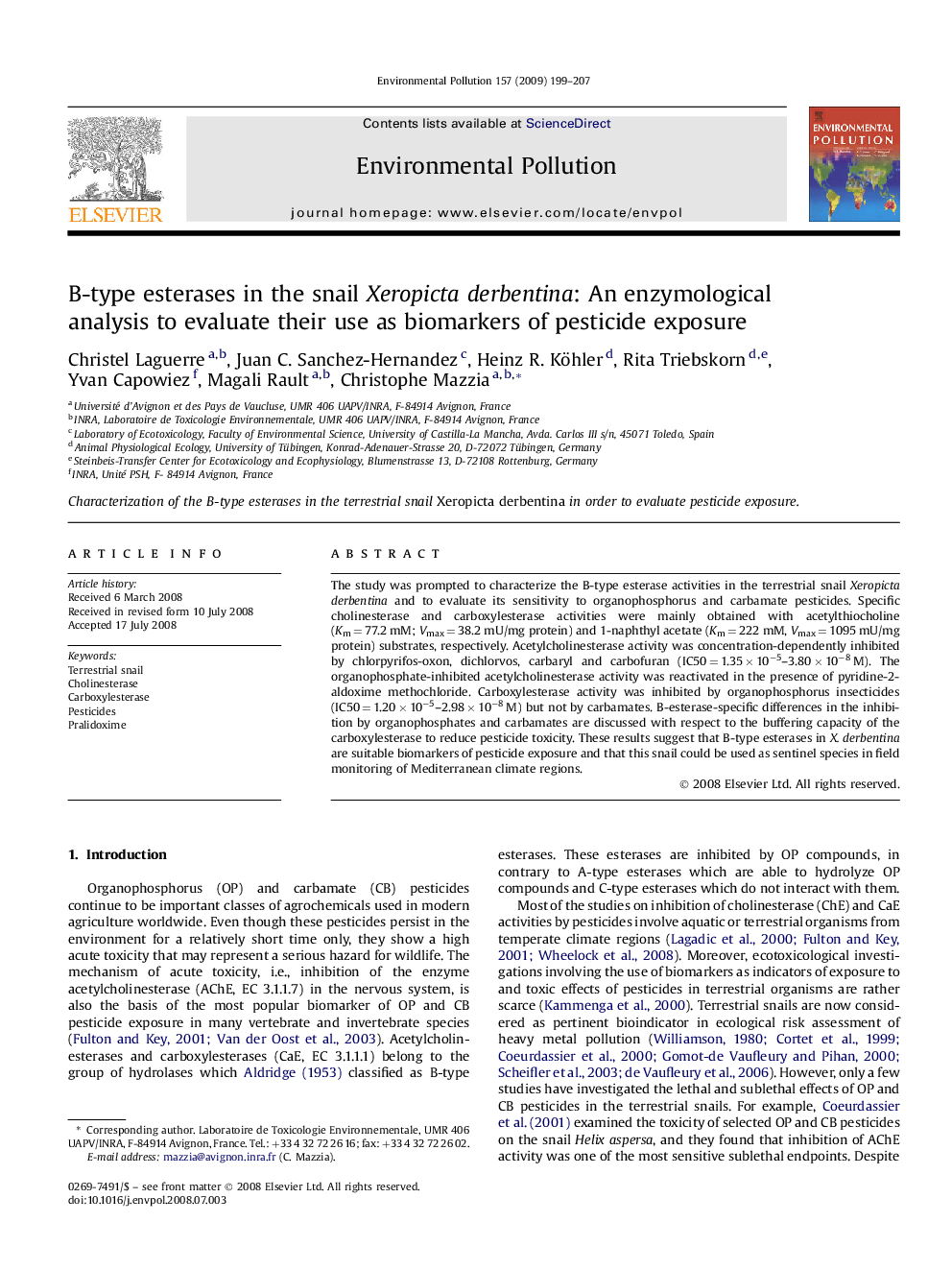| Article ID | Journal | Published Year | Pages | File Type |
|---|---|---|---|---|
| 4425978 | Environmental Pollution | 2009 | 9 Pages |
The study was prompted to characterize the B-type esterase activities in the terrestrial snail Xeropicta derbentina and to evaluate its sensitivity to organophosphorus and carbamate pesticides. Specific cholinesterase and carboxylesterase activities were mainly obtained with acetylthiocholine (Km = 77.2 mM; Vmax = 38.2 mU/mg protein) and 1-naphthyl acetate (Km = 222 mM, Vmax = 1095 mU/mg protein) substrates, respectively. Acetylcholinesterase activity was concentration-dependently inhibited by chlorpyrifos-oxon, dichlorvos, carbaryl and carbofuran (IC50 = 1.35 × 10−5–3.80 × 10−8 M). The organophosphate-inhibited acetylcholinesterase activity was reactivated in the presence of pyridine-2-aldoxime methochloride. Carboxylesterase activity was inhibited by organophosphorus insecticides (IC50 = 1.20 × 10−5–2.98 × 10−8 M) but not by carbamates. B-esterase-specific differences in the inhibition by organophosphates and carbamates are discussed with respect to the buffering capacity of the carboxylesterase to reduce pesticide toxicity. These results suggest that B-type esterases in X. derbentina are suitable biomarkers of pesticide exposure and that this snail could be used as sentinel species in field monitoring of Mediterranean climate regions.
